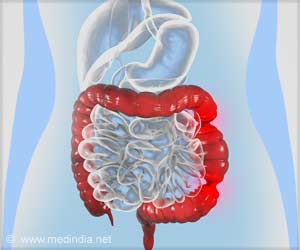Complex protein molecules called enzymes catalyze specific biochemical reactions in cells. The traditional theory is that dynamic fluctuationsprotein conformation or structure play a major role in enzyme catalysis. However, recent findings reveal that it is the "dynamic energy landscape" of the enzyme that directs it to a specific pathway that reduces the number and dimension of the energetic barriers to these catalytic changes. The study of the structure of the excited-state of protein may prove useful for drug design.
"There is a growing awareness that the inherent motions of proteins are essential to their functions," said Peter Wright, who is chair of the Scripps Research Department of Molecular Biology and a member of the Skaggs Institute for Chemical Biology at Scripps Research. "The importance of this study is that it reveals how dynamic structural fluctuations channel an enzyme through its reaction cycle-the thermal motions of the protein are harnessed to perform its biological function, in this case, catalysis. Knowledge of the excited-state conformations of proteins may offer new opportunities for drug design."The researchers used nuclear magnetic resonance (NMR) to detect and characterize higher energy structural sub-states (excited states) of E. coli dihydrofolate reductase, which has been used extensively as a model enzyme for investigating the relations between structure, dynamics, and function in proteins. The researchers found that, at each stage in the catalytic cycle, the excited-state conformations resembled the ground-state structures of both the preceding and the following intermediates. This means that the dynamic fluctuations between the ground state and the excited state were "priming" the enzyme to take up the conformation of the adjacent intermediate state, facilitating the progress of catalysis by aiding the movement of ligands (molecules that bind to one chemical entity to form a larger complex) on and off the enzyme.
"These findings contrast with the traditional 'induced fit' hypothesis," Wright said. "One of the tenets of that hypothesis is that the binding of ligands induces a structural change that increases the complementary relationship between the ligand and the enzyme."
As the study points out, most proteins do not have rigid molecular structures but are structurally heterogeneous; the motion and plasticity in their structure allows them to achieve a far greater range of functions than would be possible with static structures.
However, despite considerable evidence that many enzymes are inherently flexible, the fundamental mechanisms by which protein fluctuations couple with catalytic function remain poorly understood. In the new conformational model, a small number of minor conformational sub-states that resemble the ligand-bound conformations are already present in solution. When the ligand binds to the minor sub-state, it causes an equilibrium shift so that the ligand-bound conformation becomes the new major sub-state.
"Our study can be placed in the broader context of the catalytic cycle," Wright said. "The results imply that for each of the intermediates in the catalytic cycle of DHFR, the lowest energy excited states are the most functionally relevant conformations. The enzyme structure responds to ligands by taking up a preferred ground-state conformation, but also samples other relevant conformations of higher energy, enabling it to rapidly advance to the next steps in catalysis. As ligands change, the energy landscape and the accessible states of the enzyme change in response. Consequently, this dynamic energy landscape efficiently funnels the enzyme along a specific kinetic path, where the number and heights of the barriers between consecutive conformations have been minimized."
Advertisement
GYT






